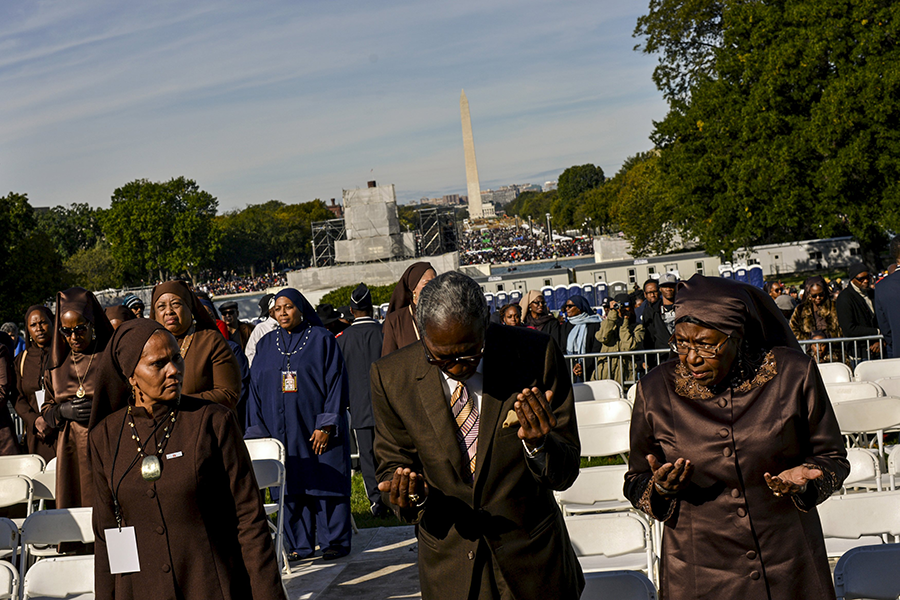Million Man March: What's different 20 years later?
Loading...
On Saturday, thousands of black men, women, and children converged on the National Mall in Washington, D.C., to demand justice from the US government.
The gathering commemorated the 20th anniversary of the Million Man March, a large, peaceful rally of black men inspired by leaders in the black community to take responsibility for their lives, families, and communities.
Echoing the rallying cry of the 1995 event, speakers at this weekend’s “Justice or Else” gathering called for justice at a time of heightened public attention on the killings of black men by police and on rising poverty in minority communities. As last time, the rally was organized by Louis Farrakhan, leader of the National of Islam and a controversial religious figure known for his antisemitic and antigay remarks.
But unlike the march 20 years ago, Saturday’s event welcomed women and other marginalized groups, including native Americans and Latinos, and called not just for introspection, but also for economic boycotts.
“We have a purchasing power of over 1 trillion dollars, but in our reckless and wasteful spending habits we have not been able to pool our resources in a collective manner to build institutions and create jobs for our people,” event organizers wrote online.
“Let us start us start by not spending money we either don’t have or cannot afford during the Christmas season,” they instructed.
Speakers at the peaceful rally in the nation’s capital, which drew fewer than the hundreds of thousands of people who turned out for the 1995 march, according to The Washington Post, pointed both to progress and to stagnation in the state of justice for blacks in America.
“Twenty years ago, the death of Tamir Rice would have fallen on deaf ears and been left for the police to write a false report, not broadcast for the world to know,” rally organizer Tamika Mallory told the crowd, reported the Post, having read a list of young black men who have been killed by police in recent years, including Tamir Rice of Cleveland, Michael Brown of Ferguson, Mo., and Eric Garner of Staten Island.
“Michael Brown’s body would have only traumatized the community, rather than wake up the people,” Ms. Mallory said.
Though the nation performed the once-unimaginable by twice electing a black president – who attended the 1995 march as a an Illinois state senate candidate – the unemployment rate among blacks remains double the rate among whites. And police killings of unarmed black men continue, having prompted outrage and a new, racially diverse movement called Black Lives Matter.
Though President Obama was in California during this year’s rally, and there were fewer national black leaders like Al Sharpton and Jesse Jackson, according to the Post, there were more young adults and more women, perhaps pointing to a new wave of leaders joining the civil rights movement. Passion has been sparked among younger generations in recent years because of increasing poverty, consistent unemployment, and police violence in minority communities.
“It is because of continued injustice that people are crying out for justice,” Benjamin F. Chavis Jr., the former NAACP chief who directed the Million Man March and was a consultant for Saturday’s rally, told the Post. “It would be incorrect to say we have made no progress. But it would be equally incorrect to say all is well.”







